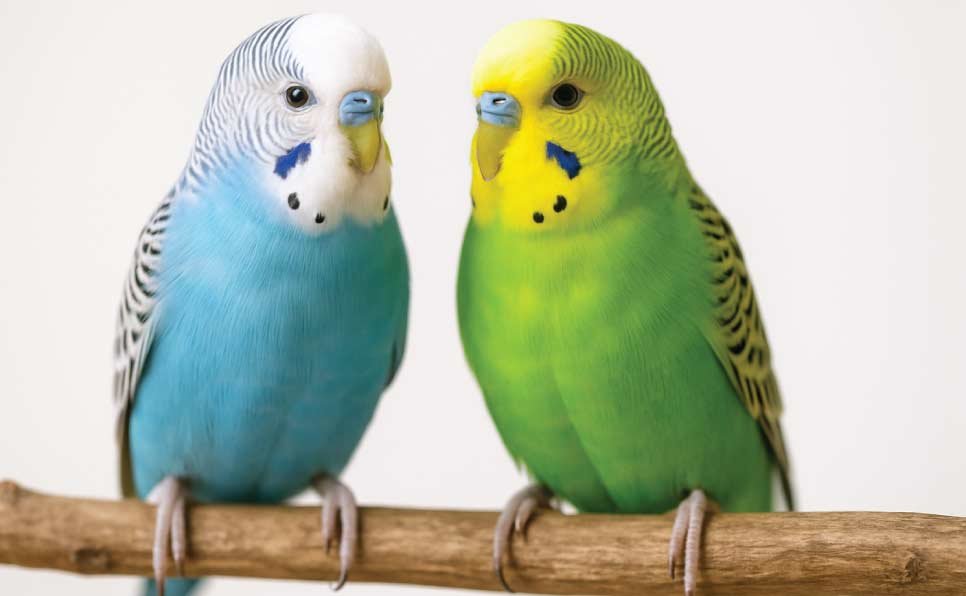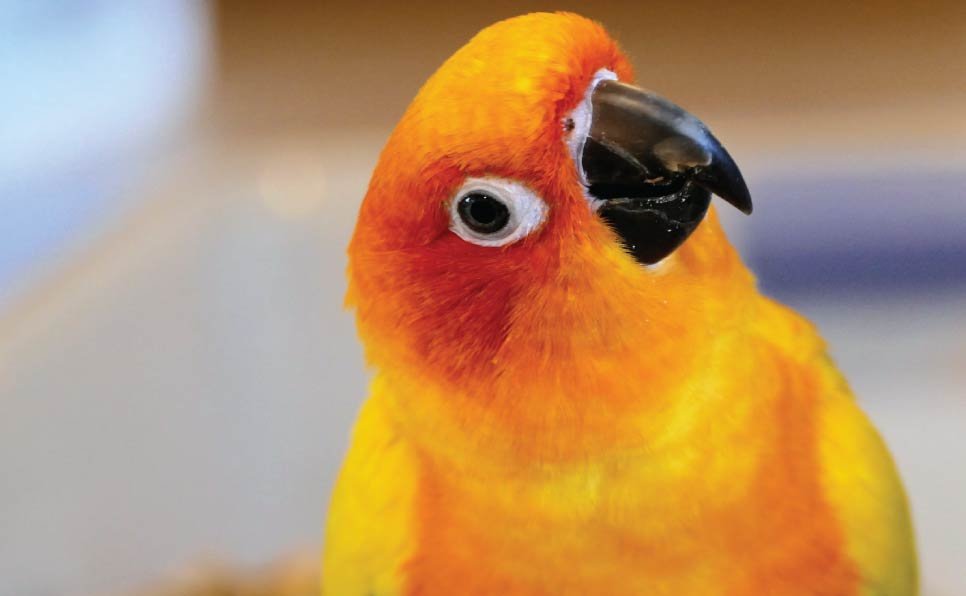Bringing a budgie (also known as a parakeet) into your home is exciting. These tiny, chirpy companions light up any space with their playful energy and curious personalities. But one of the first questions that often arises, especially for new bird parents, is: “Do budgies need a friend?“
Let’s explore this question from multiple angles, weaving in practical advice and real-life experiences from fellow budgie lovers.
Listen to the Podcast: Do Budgies Need to be in Pairs?
The Social Nature of Budgies
In the wild, budgies are flock animals. They live in large groups, constantly chirping, grooming each other, and flying in sync. Their social behavior is deeply ingrained.
That said, a domesticated budgie doesn’t necessarily need another budgie to thrive, but whether they should have one is a different conversation.
So what happens when you keep a budgie alone? Is it cruel? Can they bond with humans instead? Let’s unpack it.
Pros of Keeping Budgies in Pairs
- Built-In Companionship Having a second budgie gives your bird a natural companion to preen, play, and talk to, especially useful when you’re not home.
- Less Loneliness Solo budgies often struggle with boredom or develop repetitive behaviors if left alone for long stretches. A bonded pair offers built-in enrichment.
- More Natural Behavior In pairs, budgies display more natural flock behaviors: mutual grooming, synchronized chirping, and playful chasing.
Related read: Best Pet Birds for Beginners
Cons of Keeping Budgies in Pairs
- Bonding With You May Take a Backseat When two budgies bond closely, they may become less interested in interacting with humans. This doesn’t mean they won’t enjoy your company, but it changes the dynamic.
- Possible Conflict Like people, not all budgies click. Two males, two females, or even a male-female pair can sometimes squabble.
- Extra Responsibility More birds mean more cleanup, more noise, and slightly more expense (food, toys, vet care).
More insights here: Is a Parakeet a Good Pet?
What About Bonded Budgie Pairs?
A bonded pair is when two budgies form a close attachment, think of it as a best friend relationship. They eat together, sleep side by side, and call out when apart.
If you adopt a bonded pair, separating them can be deeply distressing. Always keep them together.
If you already have one budgie and are thinking of adding another, it’s best to introduce slowly and with patience. Some birds bond over time; others prefer parallel companionship (separate cages but shared playtime).
The Step-by-Step Introduction Process
Thinking of adding a second budgie to your flock? Take it slow, rushing this process can lead to stress, fighting, or worse.
Week 1-2: Quarantine Period Your new budgie needs to stay in a separate room entirely. This isn’t just about personality conflicts, it’s about health. New birds can carry diseases that won’t show symptoms for weeks. Use this time to observe their eating habits, energy levels, and any signs of illness.
Week 3: Visual Introduction Place the cages in the same room, but far enough apart that they can’t reach each other through the bars. Watch their body language. Curious head tilts and gentle chirping? Good signs. Aggressive posturing, lunging, or excessive stress calling? You’ll need more time.
Week 4: Closer Quarters Move the cages closer, about 2-3 feet apart. Let them get used to sharing space while maintaining their safe zones. Some budgies start “talking” to each other at this stage, which is adorable and encouraging.
Week 5+: Supervised Visits Here’s where patience really pays off. Let them out for playtime in a neutral area (not near either cage). Stay close and be ready to intervene. Short sessions, 10-15 minutes, work best initially.
The Success Signs: Mutual preening attempts, eating near each other, or synchronized head movements. The “uh-oh” signs: chasing, biting, or one bird cowering in a corner.
Remember: some budgies take months to fully accept each other. Don’t give up too quickly, but also don’t force a friendship that isn’t meant to be.
Housing Your Budgie Squad
Single Budgie Setup A solo budgie needs a cage that’s at least 18″x18″x24″, but bigger is always better. Think horizontal space over height; budgies fly side to side more than up and down.
Pair Requirements For two budgies, you’re looking at a minimum of 30″x18″x24″, though 36″ wide is ideal. Two birds mean double the wing-flapping, double the zoomies, and they need room to have their own space when they want it.
The Perch Strategy Here’s a rookie mistake: putting all perches at the same height. Create levels! High perches for sleeping, middle perches for hanging out, and lower ones for eating. For pairs, make sure there are enough perches that they can choose to be together OR apart.
Territory Troubles Even bonded pairs can get cranky about food bowls or favorite toys. Solution? Multiple everything. Two water dishes, two food bowls, toys scattered throughout the cage. It’s like having multiple TV remotes in the house, prevents arguments!
The Gender Game: What to Expect
Two Males (The Chatty Roommates) Male budgies tend to be more vocal and social. Two males often become the best of friends, chirping back and forth like old buddies discussing the weather. They’re generally less territorial than females, making them easier to pair.
Two Females (The Independent Sisters) Females can be more selective about their friendships. They’re often quieter but can be fiercely protective of their space. When two females do bond, though, it’s often incredibly strong. Just be prepared for potential attitude during hormonal seasons.
Mixed Pairs (The Complicated Relationship) A male-female pair can be wonderful… until breeding instincts kick in. If you’re not prepared for baby budgies (and trust me, it happens fast), you’ll need to monitor them closely and possibly separate during mating season. Consider this carefully, baby budgies require serious commitment.
Pro tip: Regardless of gender combination, spaying/neutering isn’t really an option for budgies like it is for cats and dogs, so behavioral management is your main tool.
Age Matters: Timing Your Additions
Baby Budgies (Under 6 months) Young budgies are generally more adaptable and easier to introduce. They’re still learning social cues and are often more accepting of new situations. However, make sure they’re fully weaned and eating independently first.
Adult Budgies (6 months – 5 years) This is prime time for introductions, but personality matters more than age. An adult budgie who’s been alone for years might need extra patience to accept a companion.
Senior Budgies (5+ years) Older budgies can absolutely benefit from companionship, but they’re often set in their ways. Go extra slow with introductions, and be prepared that some seniors prefer their solitude. A calm, gentle companion can actually help anxious older birds feel more secure.
Adoption Considerations: When possible, visit shelters or rescues. Staff often know which birds get along with others and which prefer to be solo stars. Plus, you might find an already-bonded pair looking for a home together!
Can a Single Budgie Be Happy?
Yes, but it requires you to step into the role of their flock.
Daily interaction, vocal engagement, toys, mirrors (sparingly), and routine playtime can all help keep a solo budgie fulfilled. But this works best when you’re often home and genuinely enjoy interacting with them.
Some single budgies form incredibly close bonds with their humans, mimicking speech, learning tricks, and riding around on shoulders.
Explore talking birds: Pet Birds That Talk
The Real Cost of Budgie Friendship
Let’s talk money, because nobody likes surprise expenses.
Initial Setup Costs:
- Larger cage for pairs: $150-300 (vs. $80-150 for singles)
- Double the toys, perches, dishes: Add $50-100
- Second bird adoption/purchase: $20-100+ depending on source
Monthly Ongoing Costs:
- Food: Roughly $15-25/month for a pair vs. $10-15 for one
- Bedding/cleaning supplies: Maybe $5 more per month
- Toys (they destroy them faster together): $10-20/month
The Big One: Vet Bills Here’s where it adds up. Two birds mean twice the potential health issues. Budget $200-400 per bird annually for routine care, with emergency visits running $100-500+. Consider pet insurance or start a “budgie emergency fund.”
Money-Saving Tips:
- Make your own toys from bird-safe materials
- Buy food in bulk (but check expiration dates!)
- Learn basic health monitoring to catch issues early
Red Flags: When Your Budgie Needs Help
Signs Your Single Budgie is Struggling:
- Excessive screaming, especially when you leave
- Feather plucking or over-preening
- Repetitive behaviors like constant bell-ringing or mirror obsession
- Loss of appetite or energy
- Aggression when you try to interact
Warning Signs in Paired Budgies:
- One bird consistently bullying the other
- Refusing to eat or drink when the other bird is present
- Excessive fighting over resources
- One bird becoming withdrawn or hiding constantly
- Injuries from fighting (this requires immediate intervention)
When to Call in Professional Help: If behavioral issues persist despite your best efforts, consult an avian veterinarian or certified animal behaviorist. Sometimes what looks like stubbornness is actually a health issue in disguise.
Tips from Experienced Budgie Parents
- “My solo budgie thrived because I worked from home. We had a daily routine, and he greeted me every morning by ringing his bell!”
- “We adopted a bonded pair. Watching them interact was pure joy, but they ignored us unless we brought millet.”
- “I started with one budgie and added another after six months. Slow introductions were key, now they’re besties.”
- “The Unlikely Friendship” – Sarah from Portland: “I adopted Kiwi, a 3-year-old female who’d been returned twice for being ‘antisocial.’ Six months later, I brought home Mango, a baby male. I was sure it wouldn’t work, but Kiwi immediately took him under her wing, literally. She taught him to eat new foods and even shared her favorite perch. Sometimes the most unexpected pairings work beautifully.”
- “The Great Escape Artists” – Mike from Denver: “Charlie and Daisy figured out how to open their cage latch together, something neither could do alone. I’d come home to find them having living room adventures. They’re definitely more mischievous as a team, but watching them problem-solve together is incredible.”
- “When Friendship Ends” – Lisa from Miami: “Peach and Papaya were best friends for two years, then suddenly started fighting during mating season. I had to separate them permanently, and now they live in side-by-side cages. They still chirp to each other but can’t physically interact. Sometimes relationships change, and that’s okay too.”
Whether you choose one or two, the heart of it all is this: budgies are social beings. If you are committed to daily connection, a single budgie can do wonderfully. If not, a feathered buddy might be their best bet.
Is It Cruel to Keep One Budgie?
Cruel? No. Neglectful? Only if you fail to meet their social needs.
A single budgie kept in isolation without stimulation or bonding will suffer. But with love, attention, and proper care, they can flourish as a solo bird.
So ask yourself:
- Am I home enough to spend time with my budgie?
- Do I enjoy interacting with them daily?
- Would I feel better knowing they have bird company when I’m not around?
Need more guidance? Exploring Exotic Pet Birds: The Guide
Myth-Busting Corner
Myth: “Budgies will always be happier in pairs” Reality: Some budgies genuinely prefer human companionship and find other birds stressful.
Myth: “If they fight initially, they’ll never get along” Reality: Many successful pairs had rocky starts. Give it time (but prioritize safety).
Myth: “Mirrors are good substitutes for bird friends” Reality: Mirrors can create obsessive behaviors and should be used sparingly, if at all.
Myth: “Two birds are twice the work” Reality: In some ways, yes. But paired budgies often entertain each other, potentially requiring less direct attention from you.
Final Chirp: Every Budgie is Unique
Some thrive solo, bonding deeply with their humans. Others blossom in pairs, chirping away with their best feathered friend.
There’s no one-size-fits-all. The key is understanding your budgie’s needs and being honest about your lifestyle.
If you decide to go solo, lean into the bond and make time for enrichment. If you go with a pair, delight in the companionship they bring each other.
Want to Learn More?
Explore our other bird care blogs or subscribe to our newsletter for heartwarming advice and practical tips!
Visit the Birds Blog | Subscribe to Newsletter
Do Budgies need to be in pairs: Frequently Asked Questions (FAQs)
While it might seem like a great idea to create a diverse bird family, mixing budgies with other species isn't recommended for several reasons. Different bird species have varying dietary needs, social behaviors, and communication styles. Cockatiels, for instance, are much larger than budgies and could accidentally injure them during play. Lovebirds can be surprisingly aggressive despite their sweet name. Even if they seem to get along during supervised playtime, housing them together long-term often leads to stress, bullying, or health issues. If you want multiple bird species, keep them in separate cages where they can see and hear each other safely.
This is actually a common and telling behavior! Your budgie is essentially "talking" because they're treating you as their flock mate. When another bird appears, they might go quiet because they're assessing the situation, it's not necessarily fear, but caution. Some very human-bonded budgies do become less chatty with their people after getting a bird friend, but others maintain both relationships beautifully. Consider your priorities: Do you love the constant interaction and "conversations" with your budgie? If that's a major source of joy for you, you might prefer keeping your chatty solo companion. If you'd rather they have species-appropriate companionship, be prepared that your role might shift from "best friend" to "beloved caretaker."
Losing one budgie from a bonded pair is heartbreaking, and yes, the surviving bird will likely grieve. They may call out for their companion, lose appetite, or seem depressed for weeks. Give them extra attention during this time, talk to them more, offer favorite treats, and maintain routines for comfort. Some surviving budgies eventually adjust to being solo and may even strengthen their bond with their human family. Others clearly pine for bird companionship. Wait at least a month before considering a new companion; grief takes time, and introducing a new bird too quickly can add stress. When you do feel ready, remember that the new bird won't be a "replacement", they'll be a new friend with their own personality.
Age differences can actually work quite well! Adult budgies often become protective "mentors" to babies, teaching them where to find food, how to play with toys, and even budgie social etiquette. However, make sure the baby is fully weaned (eating seeds/pellets independently) before introducing them, usually around 8-10 weeks old. The key is the adult bird's personality rather than age. A gentle, social adult will likely welcome a baby, while a territorial or set-in-their-ways bird might find a youngster annoying. Baby budgies are also more adaptable, so if you're nervous about introductions, bringing a young bird to an established adult often works better than the reverse.
Absolutely normal! Most budgie pairs develop a hierarchy, just like they would in a wild flock. There's usually a more dominant bird who gets first pick of food, the best perch spots, and leads during play. This becomes concerning only if you see actual aggression, chasing the other bird away from food entirely, preventing them from drinking water, or physical bullying that results in stress or injury. A little bossiness at meal time or claiming the top perch is just natural flock behavior. However, make sure both birds are eating, drinking, and able to access all parts of their cage comfortably. If the "submissive" bird seems constantly stressed or starts losing weight, you may need to intervene with additional food stations or even temporary separation.
Two budgies would likely be much happier in your situation! If you're gone 8+ hours daily and travel periodically, a single budgie could develop separation anxiety, destructive behaviors, or depression. Paired budgies entertain each other, provide companionship, and are generally much more content when left alone for extended periods. However, your schedule does create some challenges: bonding with you might take longer since they have each other, and if health issues arise, you'll need to be able to respond quickly to problems involving two birds instead of one. Consider your long-term plans too, if your schedule will remain demanding for years, a pair is definitely kinder. If this is a temporary busy period and you'll soon have more time for daily interaction, waiting might give you that special single-bird bond you're hoping for.











